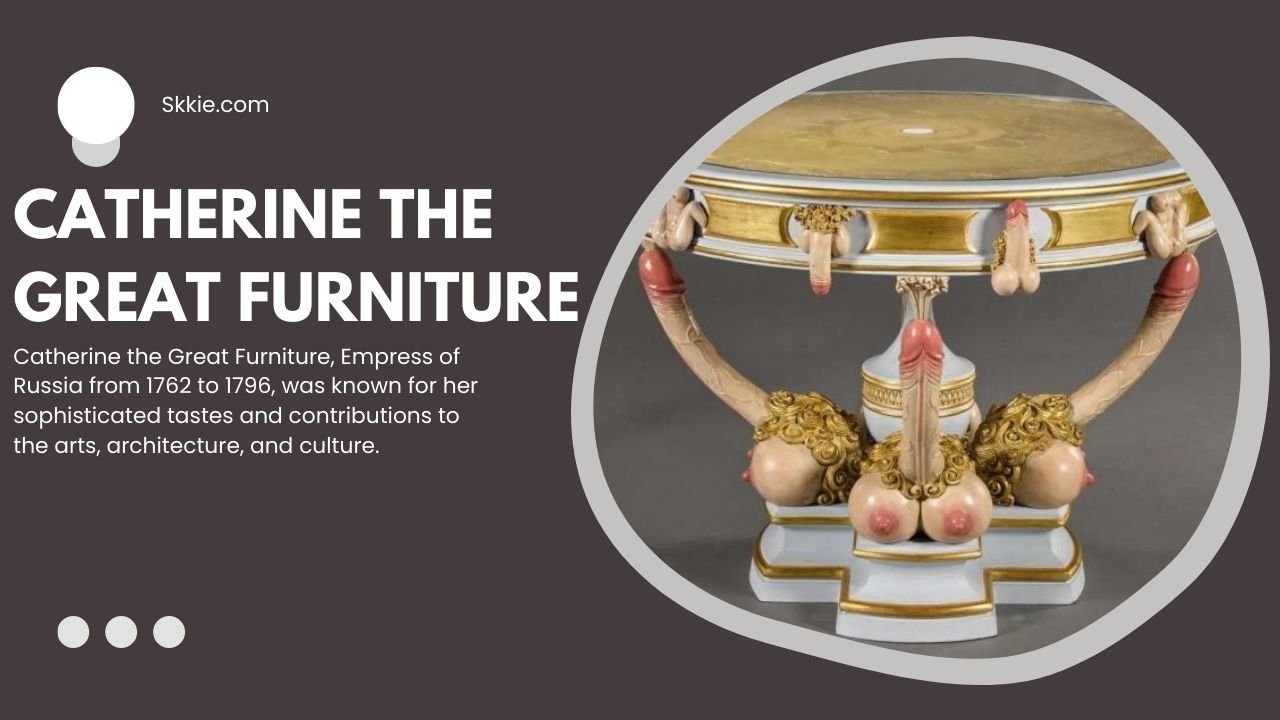Catherine the Great Furniture, Empress of Russia from 1762 to 1796, was known for her sophisticated tastes and contributions to the arts, architecture, and culture. One aspect of her enduring legacy is her collection of extravagant and carefully designed furniture that reflects the grandeur of the Russian Empire during her reign. Catherine’s furniture is a symbol of luxury, craftsmanship, and the fusion of European and Russian styles, making her influence on interior design remarkable even centuries after her rule.
The Influence of Catherine the Great Furniture Design

During Catherine the Great’s reign, her vision extended far beyond politics and military achievements. She was passionate about European culture, specifically the Enlightenment ideals and classical art. This is reflected in the furniture styles she commissioned for her palaces, which blended the grandeur of Baroque and Rococo designs with emerging Neoclassicism. Her choices laid the foundation for some of the most iconic styles in Russian furniture.
Catherine the Great Furniture brought in skilled European artisans, such as Charles Cameron, to execute her ideas. The designs emphasized symmetry, intricate carvings, and elaborate inlays, often made from luxurious materials like gilt bronze, mahogany, ebony, and marble. Every piece was crafted with the intention to impress and reflect the imperial status of her court.
Signature Furniture Pieces Commissioned by Catherine the Great
Catherine’s era produced numerous standout pieces, some of which still exist in museums and private collections today. The furniture from this time was not only functional but also highly decorative, designed to impress visitors and show off the wealth and power of the Russian Empire.
The Malachite Room Furniture
One of the most famous examples of Catherine’s legacy is the Malachite Room in the Winter Palace. The furniture in this room is adorned with intricate malachite panels, gilt bronze accents, and velvet upholstery. It exemplifies the opulence Catherine sought, with malachite symbolizing Russia’s vast natural resources and craftsmanship.
The Amber Room Furniture
Another legendary space is the Amber Room in the Catherine Palace. Often referred to as the “Eighth Wonder of the World,” the room was decorated with amber panels, gold leaf, and mirrors. The accompanying furniture, crafted from the finest materials, reflects the extravagant tastes of Catherine the Great Furniture. Although the original Amber Room was lost during World War II, its influence on furniture design remains.
The State Rooms of the Catherine Palace
The furniture in the state rooms of the Catherine Palace reveals her preference for grandeur and classical design. Chairs, tables, and chests from these rooms were typically decorated with floral marquetry, gold embellishments, and upholstered in the finest silks and brocades. Catherine also favored elaborate secretary desks and writing tables, many of which were created by European craftsmen like David Roentgen.
| Furniture Type | Key Features |
| Secretary Desks | Intricate marquetry, hidden compartments, and gilded accents |
| Side Tables | Delicate carvings, use of exotic woods like mahogany, adorned with gilding |
Materials and Craftsmanship of Catherine the Great Furniture
The materials used in the production of Catherine’s furniture were as important as the designs themselves. The Empress was particular about the use of luxurious, rare materials that symbolized the wealth of the empire.
1. Exotic Woods
Catherine’s artisans favored materials such as mahogany, ebony, and rosewood for their strength and natural beauty. These woods were often imported from the far reaches of the Russian Empire and beyond, making the pieces both a display of wealth and international influence.
2. Gilded Bronze and Metalwork
Much of the furniture was adorned with gilt bronze or ormolu mounts. These decorative elements not only served to elevate the appearance of the furniture but also represented the superior craftsmanship of the era. Ormolu was frequently used to craft decorative motifs like lions, leaves, and classical figures, adding to the regal nature of the furnishings.
3. Upholstery and Fabrics
Catherine the Great’s furnishings were often upholstered in luxurious fabrics like silk, brocade, and velvet. These fabrics were chosen for their rich texture and sheen, often dyed in deep reds, golds, and blues to match the imperial color palette of the palace interiors. The textiles were sourced from the finest weavers in Europe and often featured intricate embroidery or patterns that matched the architectural details of the room.
| Material | Purpose and Symbolism |
| Mahogany | Strength and durability, symbolizing the power of the Russian Empire |
| Silk and Velvet | Rich texture, used for opulence and to convey wealth in upholstery |
The European Influence on Catherine the Great’s Furniture
Catherine the Great was deeply influenced by the European monarchies of her time, especially the opulence of the French court at Versailles. She admired Louis XV and Louis XVI furniture styles, which were characterized by their elegance, symmetry, and intricate ornamentation. This influence is seen in the Neoclassical design language that was prevalent in Catherine’s furniture collections.
To achieve this level of craftsmanship, she employed renowned European furniture makers, many of whom were from France and England. They brought with them techniques like inlaying and gilding, which became staples in Russian palace furniture during Catherine’s reign.
How Catherine the Great Furniture Still Influences Modern Design
Today, the furniture styles of Catherine the Great Furniture still resonate with designers, collectors, and historians. The emphasis on rich materials, detailed craftsmanship, and regal aesthetics has left a lasting impact on furniture design. High-end interior designers continue to draw inspiration from the Neoclassical forms, grand color schemes, and luxurious fabrics that Catherine introduced into her palaces.
Antique collectors often seek out pieces from this period for their historical significance and artistic value. Reproductions of her most iconic pieces, such as the furniture from the Malachite Room or the Amber Room, remain popular with those looking to infuse their interiors with a sense of imperial elegance.
FAQs
1. Where Can I See Original Catherine the Great Furniture?
Original pieces from Catherine the Great’s collection can be found in museums such as the Hermitage Museum in St. Petersburg and the Catherine Palace. These institutions house many of the Empress’s furnishings, preserved for their historical and artistic significance.
2. What Materials Were Used in Catherine the Great’s Furniture?
The primary materials used included exotic woods like mahogany, rosewood, and ebony. The furniture also featured gilt bronze, marble, and luxurious textiles like silk and velvet.
3. How Did European Influence Shape Catherine the Great’s Furniture?
Catherine was heavily influenced by European designs, particularly the French styles of Louis XV and Louis XVI. She brought in European craftsmen to incorporate Neoclassical and Rococo elements into her furniture collections.
4. Is It Possible to Buy Reproductions of Catherine the Great’s Furniture?
Yes, high-quality reproductions of Catherine the Great’s furniture can be found through specialty antique dealers and luxury furniture brands that replicate the intricate designs and materials used during her reign.
Conclusion
Catherine the Great Furniture influence on furniture design has stood the test of time. Her commitment to opulence, artistry, and craftsmanship resulted in some of the most iconic pieces in the history of interior design. By blending European styles with Russian grandeur, she created a legacy of luxury that continues to inspire furniture designers, collectors, and enthusiasts today.
Read Also More Blogs:- XXXTentacion Death News: A Tragic Legacy



